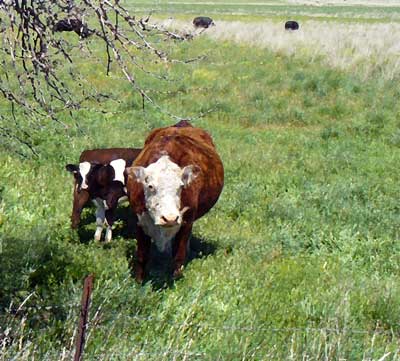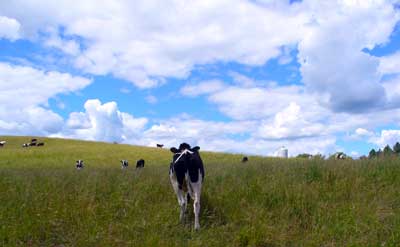Myths About Full Fat Dairy Products
Myth: Dairy fat makes you fat and is bad for you.
Truth: Dairy fat is good for you, does not cause weight gain and tastes yummy too. Check out the studies below!
People who eat whole milk products, including butter and cream, are LESS likely to become obese (Holmberg and Thelin 2013, Crichton and Alkerwi 2014). In a 12 year study, Holmberg and Thelin (2013) reported that middle aged men who consumed high fat dairy products such as whipping cream were less likely to develop central obesity (i.e. potbelly) than men who consumed low fat dairy products. Likewise, a study of 1352 people found that the more dairy products participants ate the less likely they were to be obese or to have a potbelly (Crichton and Alkerwi 2014). In addition, the MORE whole fat dairy products people ate the less likely they were to have overall and/or abdominal obesity. Whole milk products are associated with less risk of obesity (Kratz et al. 2013). This review of 16 studies found that in 11 of the studies people who enjoyed more dairy fat had lower markers of obesity (eating dairy fat was associated with less body fat and smaller waistlines). In addition, eating dairy fat either improved or had no effect on metabolic health markers and had no associated with cardiovascular disease. Full fat dairy is better for children too.
Picture: Don't be afraid to eat that full fat ice cream! Dairy fat is healthy.
Fun fact: Not all cows give milk with the same percent of fat!
Here are milk fat and protein percentages for different dairy cow breeds:
Jersey cow: 4.6-4.9% butterfat, 3.6-3.7% protein
Guernsey cow: 4.5-4.7% butterfat, 3.4-3.5% protein
Brown Swiss cow: 4.0-4.1% butterfat, 3.4-3.5% protein
Ayrshire cow: 3.9-4% butterfat, 3.2% protein
Milking Shorthorn cow: 3.8% buttermilk, 3.3% protein
Holstein-Friesian cow: 2.5-3.7% buttermilk (most milk in USA supermarkets comes from a Holstein), 3.1-3.2% protein
If you want to make a quality dairy product; such as artisan butter, cheese or yogurts; make sure you buy from a superior milk source and ask what breeds they have in their herd.
To ensure high butterfat and/or protein content, buy your own laboratory equipment to test your milk. It can be a lot easier and cheaper to have your own equipment rather than relying on a third party to test. Moolap Scientific is an Australian company that sells quality dairy and food laboratory equipment for Australasia, Oceania and Asia.
Full Fat Dairy Reduces Your Risk of Cardiovascular Disease and Diabetes!
Whole fat dairy products do not cause cardiovascular disease (Huth and Park 2012). In fact, eating creamy full fat cheese, yogurt and milk actually improves cardiovascular health (Crichton and Alkerwi 2014)! A fat in full fat dairy reduces your risk of diabetes by 62% (Mozaffarian et al. 2010). Milk fat suppresses tumour metastasis in mice (Sun et al. 2011). Consuming full fat dairy (whole milk) increases the time it takes for food to move from the stomach to the small intestine when compared to skim or low fat milk. This means that your stomach stays full longer and you feel full longer (Marzio et al. 1998). In addition, eating full fat foods helps stabilize blood sugar by slowing the rate at which glucose (sugar) enters the bloodstream.
Good News About the Fat in Dairy
Dairy Fat by the Numbers
Amounts of fat given are for 1 liter (about 1 quart or 4 cups) of whole milk. There are about 33 grams fat per liter of cow milk (Haug et al. 2007). Milk is the most complex form of natural fat and contains about 400 different types of fatty acids (Jensen 2002, Månsson 2008).
Picture: All natural whole fat milk is best for babies of all species. A Hereford beef cow feeds her auburn baby calf while a black and white foster Holstein dairy calf remains close to her side. Many cows produce enough milk to foster an additional calf or two. Some cows are extremely maternal and will happily adopt additional calves.
Two Quick Facts About Saturated Milk Fats
- Saturated milk fats do not contribute to cardiovascular disease or strokes.
- Saturated fatty acids make up about half of total milk fat (19 g/l).
Eight Benefits of Saturated Dairy Fats
- Palmitic acid (8 g/l)* increases HDL cholesterol (Mensink et al. 2003). It is one of the most common saturated fat in human breast milk.
- Myrisitic acid (3 g/l) increases HDL cholesterol (Mensink et al. 2003).
- Stearic acid increases (3 g/l) HDL cholesterol (Mensink et al. 2003).
- Butyric acid (1 g/l) modulates gene function and may prevent cancer (German 1999).
- Lauric acid (0.8 g/l) may be antiviral and antibacterial (Sun et al. 2002), inhibits COX-I and COX-II (Henry et al. 2002).
- Caprylic and capric acids inhibits COX-I and COX-II (Henry et al. 2002), may have antiviral properties, and inhibit tumor growth (Thormar et al. 1994).
- Pentadecanoic acid (about 0.4 g/l) decreases risk of a heart attack in women (Warensjö et al. 2010).
- Heptadecanoic acid decreases risk of a heart attack in women (Warensjö et al. 2010).
*The approximate amount of the fat in one liter of milk. This can vary greatly depending on the breed of cow, her genetic linage, what she has been eating, the season of the year and her Astrological sign (just kidding about the last one).
Five Benefits of Unsaturated Milk Fat
- Oleic acid (8 g/l)* lowers plasma cholesterol, LDL-cholesterol and triacylglycerol concentrations (Kris-Etherton et al. 1999), protects lipids from oxidative stressors such as ozone and cigarette smoke by replacing more susceptible fats in cellular membranes (Bielicki et al. 1995, Houg et al. 2007), reduces blood pressure (Teres et al. 2008), and assists fat burning (Lim et al. 2013).
- Linoleic acid (1.2 g/l) is an omega-6 fatty acid. When mother rats are fed linoleic acid it reduces the chance of their offspring having breast cancer (Białek et al. 2014).
- Alpha linolenic acid (0.75 g/l) is an omega-3 fatty acid. It may prevent weight gain in school aged children (Perng et al. 2014).
- Conjugated linoleic acid (CLA) (0.07-0.6 g/l) reduces inflammation. It causes a modest fat loss in humans (McCrorie et al. 2011).
- Vaccenic acid (0.3-1.5 g/l) is a isomer of oleic acid. Dietary vaccenic acid decreased fasting blood triglyceride concentrations in obese rats by 40% (Wang et al. 2008). Men who ate vaccenic acid enriched butter for 5 weeks saw their total cholesterol levels drop significantly by 6% (Tholstrup et al. 2006).
*The approximate amount of the fat in one liter of milk. This can vary depending on the breed of cow, her genetic linage, the season of the year and what she has been eating. Grass fed cows produce milk with higher vaccenic acid and CLA content.
What is Milk Fat?
95% triacylglycerols. Milk triacylglycerides are liquid at room temperature and come in varied lengths (from 4-24 C-atom chains) and can be saturated or unsaturated (Haug et al. 2007).
2% diacylglycerol 1% phospholipids 0.5% free fatty acids 0.5% cholesterol The milk fat globule membrane (MFGM) surrounds and protects dairy fat globs
Phospholipids and sphingolipids in the milk fat globule membrane (MFGM) reduce the risk of cancer. Zanabria et al. (2013) found that MFGM causes human colon cancers cells to slow down growth and commit suicide (apoptosis). It resulted in a 57% reduction in cancer cell density within 48 hours. This is comparable to many anticancer drugs!
Fun Fact: Cheese gets its distinctive flavor from an increase in free fatty acids.
Why Being Called a Fathead is a Compliment
Your brain is made of fat. Brain cells contain more fat than almost any other cell type. Fats enhance cognitive functions like thinking, act as mood enhancers and anti-convulsants, promote brain development, offer protection from brain injury due to trauma, and enhance brain repairing processes. Brain lipids do this by accelerating brain growth through synaptogenesis and neurogenesis, building neurotransmitters and receptors, prompting gene expression and neuronal activity, and inhibiting harmful activities like neuroinflammation and brain cell death (apoptosis). Bottom line is that your brain requires fat to function. Very low fat diets or eating the wrong ratio of fats can interfere with brain functioning.
What is the purpose of fats? Your body uses fats to create energy, construct cell membranes, hormones and neurotransmitters. You need fat to build your brain, improve your mood and conduct nerve transmissions.
References:
Bielicki JK, Forte TM, McCall MR. Gas-phase cigarette smoke inhibits plasma lecithin-cholesterol acyltransferase activity by modification of the enzyme's free thiols. Biochim Biophys Acta. 1995;1258:35-40. Pubmed. Białek A, Stawarska A, Tokarz A, Czuba K, Konarska A, Mazurkiewicz M. Enrichment of maternal diet with conjugated linoleic acids influences desaturases activity and fatty acids profile in livers and hepatic microsomes of the offspring with 7,12-dimethylbenz[a]anthracene-induced mammary tumors. Acta Pol Pharm. 2014 Sep;71:747-61. Pubmed. Crichton GE, Alkerwi A. Dairy food intake is positively associated with cardiovascular health: findings from Observation of Cardiovascular Risk Factors in Luxembourg study. Nutr Res. 2014;34:1036-44. Pubmed. doi: 10.1016/j.nutres.2014.04.002 Crichton GE, Alkerwi A. Whole-fat dairy food intake is inversely associated with obesity prevalence: findings from the Observation of Cardiovascular Risk Factors in Luxembourg study. Nutr Res. 2014;34:936-43. Pubmed. doi: 10.1016/j.nutres.2014.07.014. German JB: Butyric acid: a role in cancer prevention. Nutr Bull. 1999;24:203-209. doi: 10.1111/j.1467-3010.1999.tb00910.x Haug A, Høstmark AT and Harstad OM. Bovine milk in human nutrition – a review. Lipids in Health and Disease 2007;6:25. doi:10.1186/1476-511X-6-25 Full paper. Henry GE, Momin RA, Nair MG, Dewitt DL. Antioxidant and cyclooxygenase activities of fatty acids found in food. J Agric Food Chem 2002, 50:2231-4. Pubmed. doi: 10.1021/jf0114381 Holmberg S, Thelin A. High dairy fat intake related to less central obesity: a male cohort study with 12 years' follow-up. Scand J Prim Health Care. 2013 Jun;31:89-94. Pubmed. doi: 10.3109/02813432.2012.757070. Huth PJ and Park KM. Influence of Dairy Product and Milk Fat Consumption on Cardiovascular Disease Risk: A Review of the Evidence. Adv Nutr. 2012;3:266–285. Pubmed. Full paper. Kratz M, Baars T, Guyenet S. The relationship between high-fat dairy consumption and obesity, cardiovascular, and metabolic disease. Eur J Nutr. 2013 Feb;:1-24. Pubmed. Kris-Etherton PM, Pearson TA, Wan Y, Hargrove RL, Moriarty K, Fishell V, Etherton TD: High-monounsaturated fatty acid diets lower both plasma cholesterol and triacylglycerol concentrations. Am J Clin Nutr. 1999;70:1009-15. Pubmed. Full paper. Jensen RG. The Composition of Bovine Milk Lipids: January 1995 to December 2000. J Dairy Sci. 2002;85:295–350. Pubmed. Lim JH, Gerhart-Hines Z, Dominy JE, Lee Y, Kim S, Tabata M, Xiang YK, Puigserver P. Oleic acid stimulates complete oxidation of fatty acids through protein kinase A-dependent activation of SIRT1-PGC1α complex. J Biol Chem. 2013;288:7117-26. Pubmed. doi: 10.1074/jbc.M112.415729 Månsson HL. Fatty acids in bovine milk fat. Food Nutr Res. 2008; 52: Pubmed. doi: 10.3402/fnr.v52i0.1821 (full paper). Marzio L, Giacobbe A, Conoscitore P, Facciorusso D, Frusciante V, Modoni S. Evaluation of the use of ultrasonography in the study of liquid gastric emptying. Am J Gastroenterol. 1989;84:496-500. Pubmed. McCrorie TA, Keaveney EM, Wallace JM, Binns N, Livingstone MB. Human health effects of conjugated linoleic acid from milk and supplements. Nutr Res Rev. 2011;24:206-27. Pubmed. doi: 10.1017/S0954422411000114. Mensink RP, Zock PL, Kester AD, Katan MB. Effects of dietary fatty acids and carbohydrates on the ratio of serum total to HDL cholesterol and on serum lipids and apolipoproteins: a meta-analysis of 60 controlled trials. Am J Clin Nutr. 2003;77:1146-55. Pubmed. Full paper. Mozaffarian D, Cao H, King IB, Lemaitre RN, Song X, Siscovick DS, Hotamisligil GS. Trans-palmitoleic acid, metabolic risk factors, and new-onset diabetes in U.S. adults: a cohort study. Ann. Intern. Med. 2010 Dec 21;153:790-9. Pubmed. Full Paper. Perng W1, Villamor E2, Mora-Plazas M3, Marin C3, Baylin A2. Alpha-linolenic acid (ALA) is inversely related to development of adiposity in school-age children. Eur J Clin Nutr. 2014 Oct 1. Pubmed. doi: 10.1038/ejcn.2014.210. Soares JK, de Melo AP, Medeiros MC, Queiroga RC, Bomfim MA, Santiago EC, Guedes RC. Anxiety behavior is reduced, and physical growth is improved in the progeny of rat dams that consumed lipids from goat milk: an elevated plus maze analysis. Neurosci Lett. 2013;552:25-9. Pubmed. doi: 10.1016/j.neulet.2013.07.028 Sun CQ, O'Connor CJ, Roberton AM: The antimicrobial properties of milkfat after partial hydrolysis by calf pregastric lipase. Chem Biol Interact 2002;140:185-98. Pubmed. Sun X, Zhang J, Gupta R, Macgibbon AK, Kuhn-Sherlock B, Krissansen GW. Dairy milk fat augments paclitaxel therapy to suppress tumour metastasis in mice, and protects against the side-effects of chemotherapy. Clin Exp Metastasis. 2011;28:675-88. Pubmed. doi: 10.1007/s10585-011-9400-1. Teres S, Barcelo-Coblijn G, Benet M, Alvarez R, Bressani R, Halver JE, Escriba PV. Oleic acid content is responsible for the reduction in blood pressure induced by olive oil. Proceedings of the National Academy of Sciences. 2008;105:13811–6. Pubmed. doi: 10.1073/pnas.0807500105 (full paper). Tholstrup T, Raff M, Basu S, Nonboe P, Sejrsen K, Straarup EM. Effects of butter high in ruminant trans and monounsaturated fatty acids on lipoproteins, incorporation of fatty acids into lipid classes, plasma C-reactive protein, oxidative stress, hemostatic variables, and insulin in healthy young men. Am J Clin Nutr. 2006;83:237–43. Pubmed. Full paper. Thormar H, Isaacs EE, Kim KS, Brown HR. Inactivation of visna virus and other enveloped viruses by free fatty acids and monoglycerides. Ann N Y Acad Sci. 1994;724:465-71. Pubmed. Vickers MH, Guan J, Gustavsson M, Krägeloh CU, Breier BH, Davison M, Fong B, Norris C, McJarrow P, Hodgkinson SC. Supplementation with a mixture of complex lipids derived from milk to growing rats results in improvements in parameters related to growth and cognition. Nutr Res. 2009;29:426-35. Pubmed. doi: 10.1016/j.nutres.2009.06.001 Wang Y, Lu J, Ruth MR, Goru SD, Reaney MJ, Glimm DR, Vine DF, Field CJ, Proctor SD. Trans-11 Vaccenic Acid Dietary Supplementation Induces Hypolipidemic Effects in JCR:LA-cp Rats. J. Nutr 2008;138:2117-2122. Pubmed. doi: 10.3945/jn.108.091009 (full paper) Warensjö E, Jansson J, Cederholm T, Boman K, Eliasson M, Hallmans G, Johansson I, Sjögren. Biomarkers of milk fat and the risk of myocardial infarction in men and women a prospective, matched case-control study. Am J Clin Nutr 2010;92:194-202. Pubmed. doi: 10.3945/ajcn.2009.29054 (full paper). Zanabria R, Tellez AM, Griffiths M, Corredig M. Milk fat globule membrane isolate induces apoptosis in HT-29 human colon cancer cells. Food Funct. 2013;4:222-30. Pubmed. doi: 10.1039/c2fo30189j


